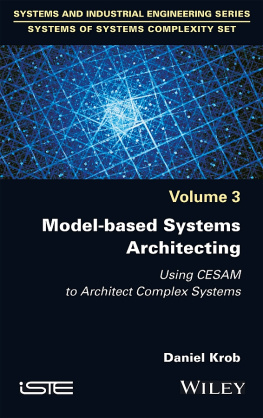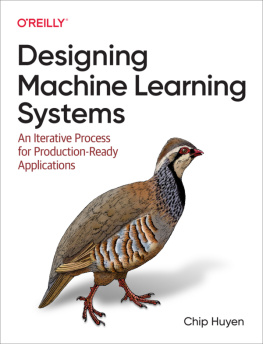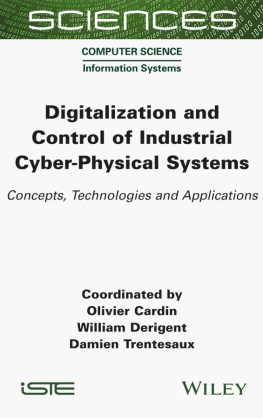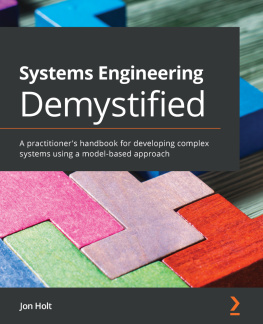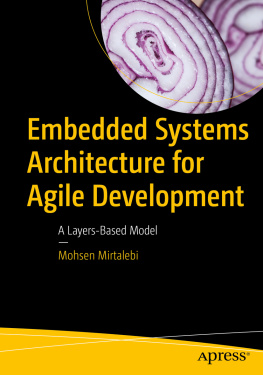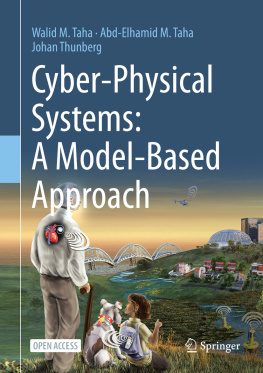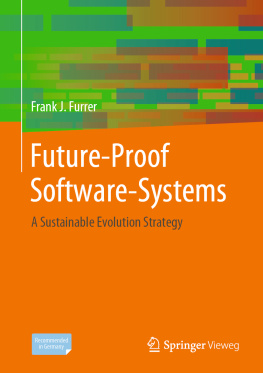Systems of Systems Complexity Set
coordinated by
Jean-Pierre Briffaut
Volume 3
Model-based Systems Architecting
Using CESAM to Architect Complex Systems
Daniel Krob

First published 2022 in Great Britain and the United States by ISTE Ltd and John Wiley & Sons, Inc.
Apart from any fair dealing for the purposes of research or private study, or criticism or review, as permitted under the Copyright, Designs and Patents Act 1988, this publication may only be reproduced, stored or transmitted, in any form or by any means, with the prior permission in writing of the publishers, or in the case of reprographic reproduction in accordance with the terms and licenses issued by the CLA. Enquiries concerning reproduction outside these terms should be sent to the publishers at the undermentioned address:
ISTE Ltd
27-37 St Georges Road
London SW19 4EU
UK
www.iste.co.uk
John Wiley & Sons, Inc.
111 River Street
Hoboken, NJ 07030
USA
www.wiley.co
ISTE Ltd 2022
The rights of Daniel Krob to be identified as the author of this work have been asserted by him in accordance with the Copyright, Designs and Patents Act 1988.
Any opinions, findings, and conclusions or recommendations expressed in this material are those of the author(s), contributor(s) or editor(s) and do not necessarily reflect the views of ISTE Group.
Library of Congress Control Number: 2021952707
British Library Cataloguing-in-Publication Data
A CIP record for this book is available from the British Library
ISBN 978-1-78630-820-7
Preface
CESAMES and the CESAM Community
The CESAM Community, which disseminates the CESAM method and is the origin of this book, is managed by CESAMES, a non-profit organization created under the French law of July 1, 1901.
CESAMES emerged in 2009, as a spin-off of the Engineering of Complex Systems industrial chair of Ecole Polytechnique, the leading engineering university in France, with the objective of promoting systems architecting in academia and industry. To do so, CESAMES organizes awareness events all year long that allow scientists and industrialists to meet and to share about complex industrial systems. As an example, since 2010 CESAMES has organized on a yearly basis the Complex Systems Design & Management (CSD&M) international conference series. This event that now alternates between France and Asia gathers each year more than 300 academic and professional participants, coming from all parts of the world. CESAMES also manages working groups and professional workshops, always with the same goal: increasing awareness about systems architecting methods and tools.
Thanks to these events, CESAMES has federated a significant international community of systems architects and engineers who all share the same vision: systems architecting and engineering represent a key factor of competitiveness for companies that has to be developed.
In order to reinforce its visibility and to get more influence at a worldwide level, CESAMES decided in 2017 to manage its activities through the CESAM Community banner. However, the mission of the CESAM Community remained of course the same: sharing good practices in enterprise and systems architecture among the community and attesting the competences of the community members in these domains through the CESAM certification.
More precisely, the CESAM Community works to achieve the following:
- Make architecture a key tool for business competitiveness by disseminating its use within companies and by communicating the results of its implementation through the visibility and communication actions managed by the CESAM Community.
- Propose and develop the best practices of systems architecture in industry and services, through the creation of dedicated publications and the sharing of returns on experience between systems architects and engineers during the events of the community.
- Propose reference systems architectures, based on the generic CESAM systems architecting methodology, that are specific to some industrial sectors in order to facilitate the work of systems architects and engineers within these sectors.
- Facilitate access to the CESAM method and develop its use in France and worldwide.
CESAMES Systems Architecting Method (CESAM)
The CESAM Community and its members act as the initial developers and contributors of the CESAMES Systems Architecting Method (CESAM), which is presented in more detail in this book.
The CESAM is a systems architecting and modeling framework, developed since 2003 in close interaction with many industrial leading companies. It is dedicated to the working systems architects, engineers or modelers in order to help them to better master the complex integrated systems they are dealing with in their day-to-day professional life.
The CESAM framework indeed has a number of unique features:
- 1) First of all, CESAM has sound mathematical fundamentals, which are providing a rigorous and unambiguous semantics to all introduced architectural concepts. This first property is clearly key for ensuring an efficient and real understanding between the stakeholders of a system development project (which is often key for ensuring the success of such projects).
- 2) These bases ensure that CESAM is a logically complete lean systems modeling framework: in other terms, the architectural views proposed by CESAM are just necessary and sufficient to model any integrated system. This second property guarantees both the completeness of a CESAM system model and that no useless modeling work will be done when using CESAM.
- 3) Finally, CESAM is practically robust and easy to use both by systems architects and systems modelers. This was indeed pragmatically observed among the very large number of concrete systems within many industrial areas (aeronautics, automotive, civil engineering, defense and security, energy, railway, space, etc.) that were modeled and architected using CESAM.
Note also that the CESAM framework due to the right level of abstraction can be implemented and used with both all existing systems modeling frameworks and systems modeling software tools available on the market.
Last but not least, one shall finally point out, as already stated, that CESAM intends both to propose a generic architecting framework, as introduced in this book, and to progressively offer specific concrete reference systems architectures for a number of industrial application domains in order to facilitate the work of the systems architects and engineers within these areas.
How to read this book?
This book on model-based systems architecting with CESAM is organized in order to be read in many different ways. Typical reading modes are presented below depending on the readers objectives.
- Discovering what a system is from a pragmatic perspective: the Introduction is an introductory section that introduces systems from a purely practical point of view.
- Understanding systems architecting fundamentals: is dedicated to the reader who wants to discover the sound logical basis the CESAM framework relies upon.
- Being aware of systems architecting benefits: you may only read where the main motivations of systems architecting are described.

